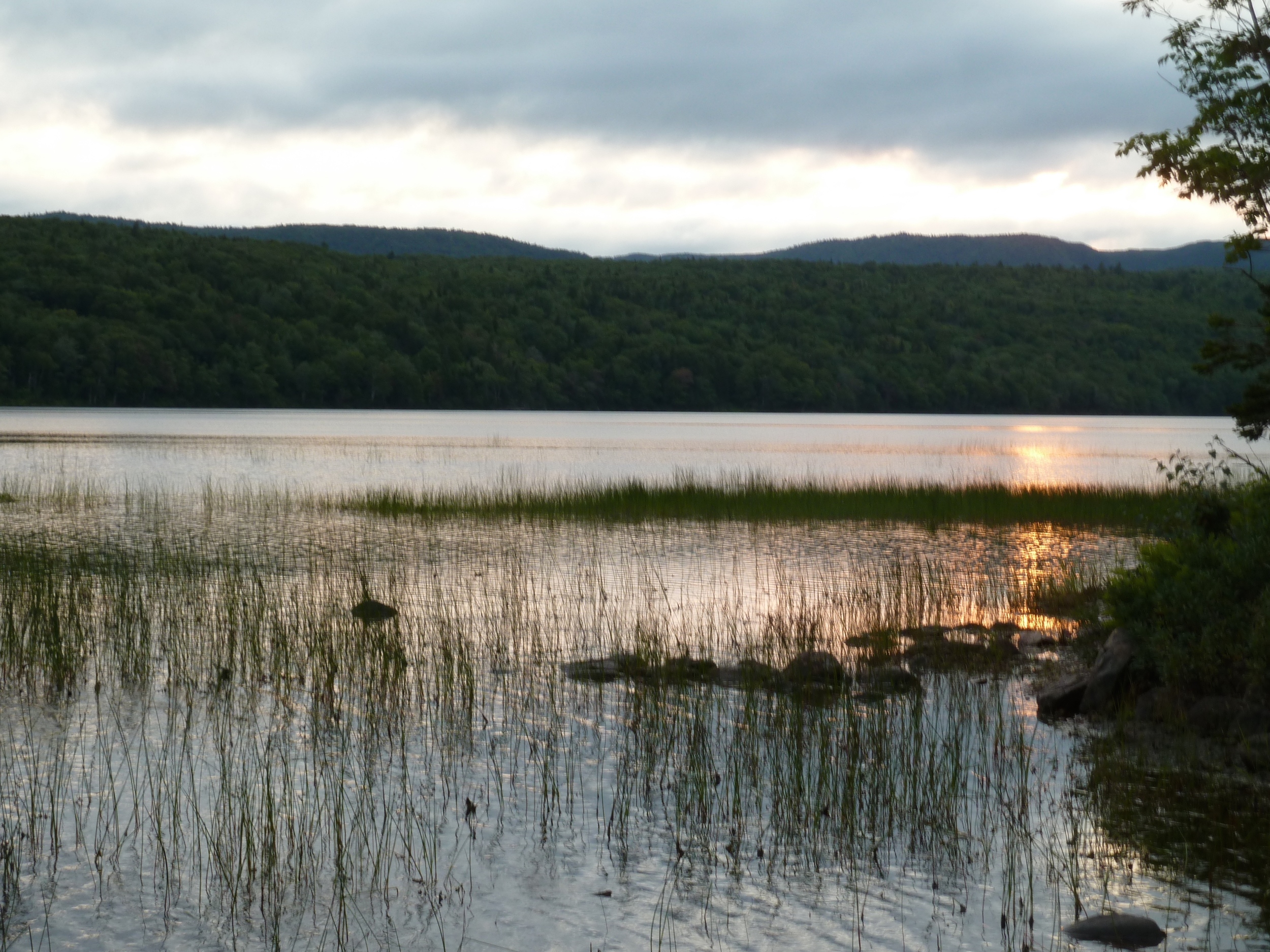Last night, I went on a guided after-dark hike. Not something I’d ever have done alone—go walk in the woods after nightfall, so I am glad the interpretive rangers took us out. While I was sitting at the lake in the quiet waiting for the rest of the group and leaders to arrive, I heard the loons calling. Don’t think I’ve ever heard them before--in person, I mean. It's a lovely sound, which made me more aware of my surroundings: the silent lake, the gorgeous sunset, the sweet clean pine-y air, and the dew coming on with the dusk.
Our group consisted of the Parks Canada leaders, Kirsty and Gina, a young boy/girl couple, and me. Kirsty is the head of the interpretive rangers, and she really knows her stuff. She talked about many systems and creatures, and the history of Lake Warren, and how stuff worked out in the woods. When she was a kid, her grandmother ran the Polish Restaurant in town. At 10 o’clock on a summer's night, after the restaurant closed, she used to bring Kirsty to Warren Beach, on this lake to swim and relax after the day of heat, cooking and hard work. So she had always come here after dark, and they would swim and hang out then, at the edge of these deep dark woods. In her experience, there was nothing to fear.
The idea of this hike was to use your other senses to guide you on the trail. She had some tiny red light flashlights, if we needed them, so our night vision wouldn’t be compromised. No one took the flashlight.
...and then it got really dark!
I was ok walking the trail at dusk, and even into pretty dark nighttime, but at one point, I tripped over a root, and nearly fell. Then, I stepped on a loose rock and stumbled off the trail. We were hiking along at a good clip IN THE DARK! I trip on hiking trails in broad daylight! So I asked if it was ok, then pulled my little lamp out of my pocket. It has a red light function, so I turned it to that, and held it down by my side. In this way, I was able to watch the trail, not break my neck, and not impact anyone else’s experience.
I never knew that a red flashlight would preserve your night vision. Kirsty told a story about Pirates—that they wore an eye patch to preserve their night vision. Able to fight on deck and then drop down into the dark hold of a ship to see who was there to fight, and what there was to plunder. Funny. I always thought it was because they’d had one eye gouged out in a fight. Biting off ears, fingers, noses, and eye gouging were traditional fighting moves back in the day. But her story was interesting, and much less violent.
Once I could see where I was putting my feet, I was able to enjoy being in the woods. Periodically we would stop, regroup, and Kirsty would tells us a story, or make some sensory suggestion that we might tune in to: listening to the different kinds of soughing sounds the various leaves make in the wind, the scent of a deep bed of pine needles, listening to the owls and trying to figure out what kind they were. We watched for bats flying over the lake in the near dark, eating up their weight in bugs all night long.
I was wearing an Adidas warm-up jacket with three white stripes running from the collar, all the way down the sleeves. It was stunning just how visible this made me. Even in full dark, as we were walking back to the picnic area where we’d parked, I was visible when someone approached me before anything else was. Kirsty called it my skunk-warning jacket—telling all predators who might think about getting a nighttime snack, to look elsewhere. I never thought about skunks in the woods at night, but that white stripe they wear probably does save everyone a heap of trouble after dark.
We ended the evening sitting at a picnic table in the dark chatting, enjoying some blueberry tea and Cape Breton Oat Cakes. Stimulating our sense of taste at the end of this sensory after-dark hike. I totally loved this workshop. It opened up a world I have not had access to since I was a youngster back in my home town, and I am so grateful for the experience.




